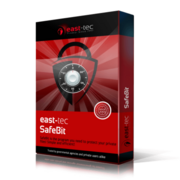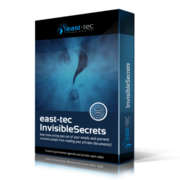
Best Endpoint Encryption Software 2025
Endpoint Encryption Software encompasses encryption of disks, folders and files, and also removable media (e.g. flash drives) that may be easily stolen, to prevent data loss and maintain compliance.
We’ve collected videos, features, and capabilities below. Take me there.
All Products
Learn More about Endpoint Encryption Software
What is Endpoint Encryption Software?
Endpoint Encryption Software protects data residing on a computer hard drive (whether a personal computer or a server) and other network endpoints such as USB flash drives, external hard drives, SD memory cards, etc.Endpoint encryption protects data on a given endpoint by making it unreadable without using the proper decryption key.
The software can encrypt data on a file-by-file basis or encrypt everything within the hard drive or disk on the endpoint. Endpoint encryption software provides the encrypting agent on each endpoint. It also provides the key management features so that endpoints within an organization can encrypt/decrypt across devices as needed.
Endpoint encryption is an important part of the shift towards endpoint security within business’s overall security strategy. Endpoint encryption protects data both within and outside of the network. This provides more security in the event that other systems or the endpoint itself is compromised. This granular level of security helps protect organizations that have Bring Your Own Device (BYOD) policies by securing data on a variety of endpoints, including personal devices.
Endpoint encryption software also reduces the administrative overhead associated with encryption programs. The software centralizes policy administration and key management to a single application or console. The software also provides better documentation and reporting to ensure compliance with internal security policies and external auditing processes.
Endpoint Encryption Strategies
Endpoint encryption can happen in one of three ways. The first is encrypting the files or data on a computer. The advantage of this approach is that each file is encrypted and will remain so if it is moved from the source computer to a different computer. The disadvantage is that each file must be encrypted one by one. This strategy is most applicable to organizations with BYOD policies, in which case only company data is encrypted.
A second approach is often called disk encryption of full disk encryption. With this approach, the entire hard disk drive is encrypted. This approach is particularly helpful in the event of device theft or loss as everything on the hard drive is automatically protected. A possible downside of this approach is that if any file on the encrypted disk is moved to another computer or a flash drive, it is no longer encrypted. This is a very common approach for company-owned endpoints, such as servers.
A newer method of encryption is transparent file encryption. This method is based on predefined policies that identifies sensitive data and encrypts it specifically. In this case, the data stays encrypted even if it leaves the endpoint. Transparent file encryption is not universally offered. It is most applicable when all relevant devices have the client necessary to encrypt and decrypt each other’s data as necessary, while also protecting against single-endpoint breaches.
Endpoint Encryption Software Comparison
When comparing endpoint encryption solutions, consider these factors:
Encryption Strategies: Does the organization need to encrypt specific files, classes of files, or everything on given endpoints? These distinctions will help determine which methods of encryption are most helpful for the business, and if the product needs to support multiple or all encryption strategies.
Scalability: As with all endpoint security products, scalability is a key factor for long-term viability. Multiple considerations impact scalability, such as pricing, mass device management, and the range of endpoint types protected (such as IoT devices).
Start an endpoint encryption software comparison here
























